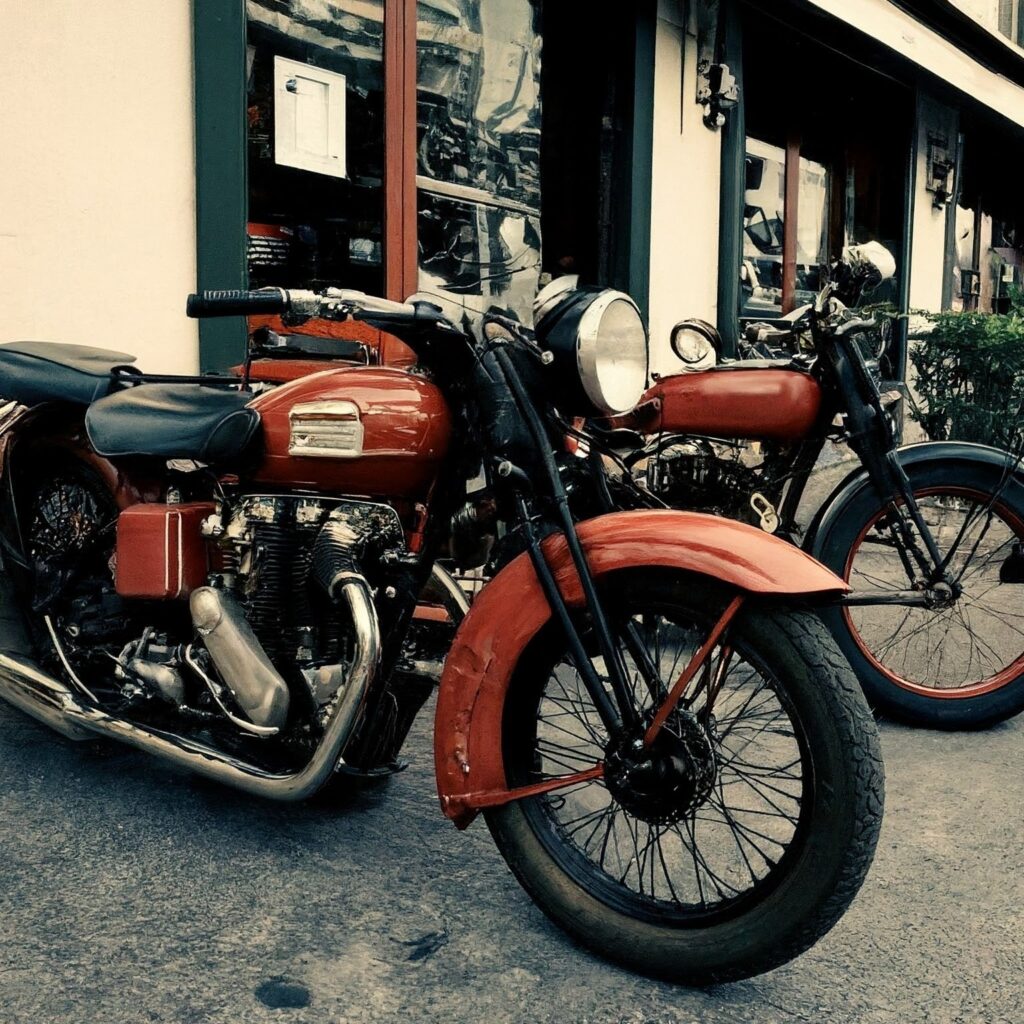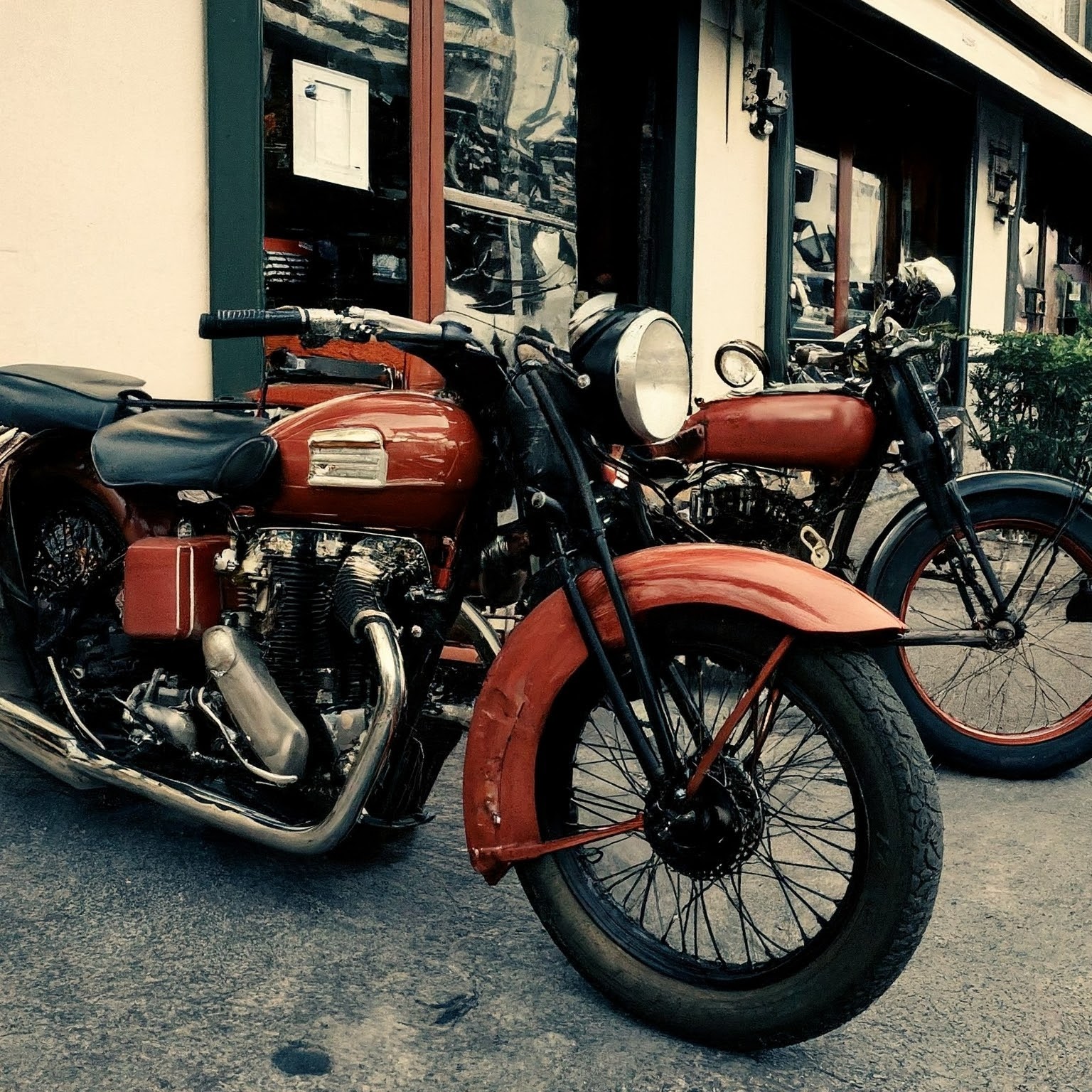
The story of motorcycles in America is a dynamic tale of engineering ingenuity, cultural rebellion, and the open road. From humble beginnings as motorized bicycles to becoming symbols of freedom and adventure, motorcycles have had a profound impact on American culture and transportation. This article examines the history of motorcycles in America, tracing their origins, key milestones, cultural effects, and ongoing development.
The Dawn of the Motorcycle Era
The late 19th century experienced the birth of the motorcycle, inventors were experimenting with attaching engines to bicycles. In 1901, Indian, founded in Springfield, Massachusetts, became the first company to mass-produce motorcycles in the United States. Shortly after, in 1903, William Harley and Arthur Davidson produced their first motorcycle in Milwaukee, Wisconsin, laying the foundation for another iconic American brand.
These early motorcycles were essentially motorized bicycles, with simple designs and limited capabilities. However, they offered a new form of personal transportation, appealing to those seeking an alternative to horses and early automobiles. Early motorcycles quickly gained popularity and were used for racing and competitions, which helped improve the technology and show how capable the early machines were.
Early Innovations and the Rise of Competition
The first decades of the 20th century saw rapid advancements in motorcycle technology. Engine designs became more sophisticated, suspensions improved, and features like headlights and electric starters were introduced. Indian and Harley-Davidson emerged as dominant players, constantly pushing the boundaries of performance and reliability.
Motorcycle racing played a crucial role in these innovations. Board track racing, popular in the early 1900s, pushed machines and riders to their limits. This was a dangerous sport, which claimed the lives of many racers, crew members, and even spectators. Through these tragedies, however, further advancement continued, leading to better and safer machines.
By the 1910s, motorcycles were becoming increasingly practical for everyday transportation, and their popularity continued to grow. Companies like Excelsior and Henderson also enjoyed success during this era, creating a competitive market that spurred further innovation.
Motorcycles in Wartime
World War I and World War II significantly impacted the American motorcycle industry. Harley-Davidson became a major supplier of motorcycles to the US military, producing thousands of machines for reconnaissance, messenger duties, and other essential tasks. The war effort spurred production and technological advancements, further solidifying Harley-Davidson’s position in the market.
Indian also contributed to the war effort, but to a lesser extent. After WWII, Harley-Davidson had established a significant lead over Indian. Indian struggled to compete and eventually ceased production in 1953.
The Rise of Motorcycle Culture
In the post-World War II era, motorcycles became increasingly associated with freedom, rebellion, and individuality. Returning veterans, seeking adventure and camaraderie, formed motorcycle clubs, and the image of the motorcycle rider began to evolve.
The 1950s saw the emergence of the “biker” stereotype, fueled by films like The Wild One (1953), which portrayed motorcycle gangs as rebellious outlaws. While this image was largely exaggerated, it contributed to the mystique and allure of motorcycles. At the same time, motorcycles became more accessible and affordable, attracting a wider range of riders.
British motorcycle brands like Triumph and BSA also gained popularity in the American market, offering smaller, sportier alternatives to the larger American machines.
The Japanese Invasion and the Modern Era
In the 1960s and 1970s, Japanese manufacturers like Honda, Yamaha, Kawasaki, and Suzuki entered the American market with technologically advanced and affordable motorcycles. These bikes offered superior performance, reliability, and fuel efficiency compared to many American-made machines.
The “Japanese invasion” had a profound impact on the American motorcycle industry. Harley-Davidson faced intense competition and struggled to maintain its market share. The company underwent significant restructuring and modernization efforts in the 1980s to compete with the Japanese brands.
Today, the American motorcycle market is diverse, with a wide range of manufacturers and motorcycle styles available. Harley-Davidson remains an iconic American brand, while Japanese, European, and other manufacturers offer everything from high-performance sportbikes to comfortable touring machines. Electric motorcycles are also emerging as a new segment, promising a cleaner and more sustainable future for motorcycling.
Cultural Impact and Legacy
Motorcycles have left an indelible mark on American culture. They have been featured in countless films, television shows, and songs, often representing freedom, adventure, and rebellion. Motorcycle clubs and rallies have become important social and cultural institutions.
Motorcycles have also played a significant role in transportation and recreation. They offer a unique way to experience the open road, connecting riders with nature and their surroundings. Whether it’s cruising along a coastal highway or exploring a backcountry trail, motorcycles provide an unparalleled sense of freedom and adventure.
The history of motorcycles in America is a testament to human ingenuity, cultural evolution, and the enduring appeal of the open road. From humble beginnings to becoming cultural icons, motorcycles have shaped American society and continue to inspire riders around the world.
Conclusion
From their early days as motorized bicycles to their current status as symbols of freedom and innovation, motorcycles have traversed a fascinating path in American history. They’ve weathered wars, economic shifts, and technological revolutions, constantly evolving to meet the changing needs and desires of riders. The rumble of the engine, the wind in your face – these are experiences deeply embedded in American culture, a legacy forged by the countless individuals who have embraced the motorcycle and the open road. As technology continues to advance, the future of motorcycles in America promises even more exciting chapters, ensuring that the spirit of freedom and adventure will continue to ride on.
